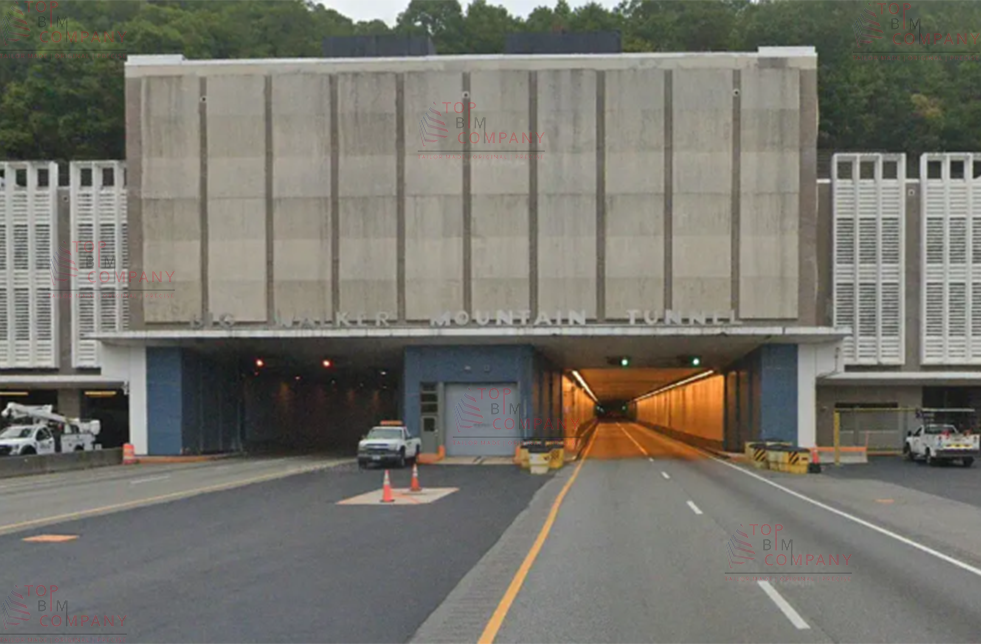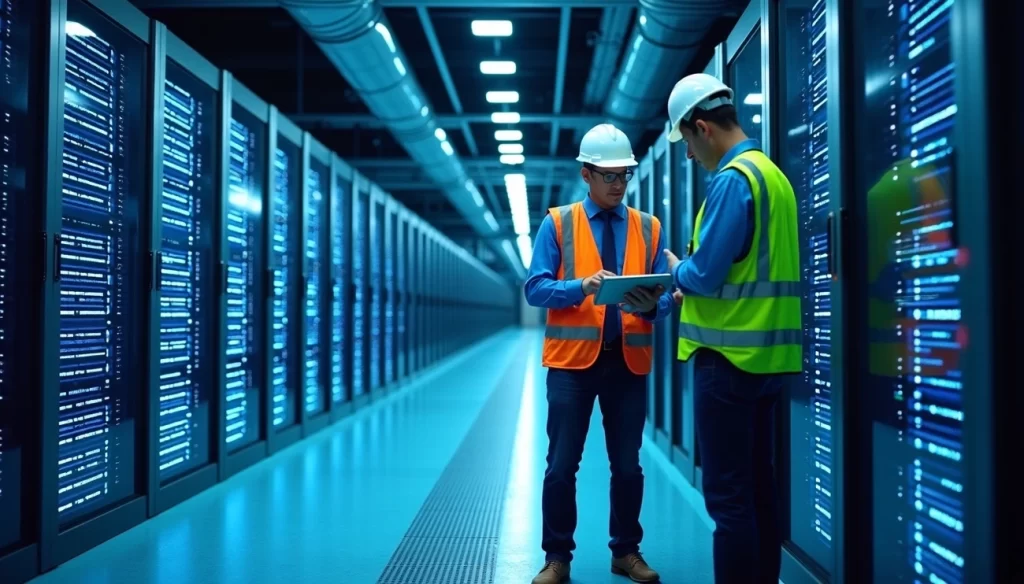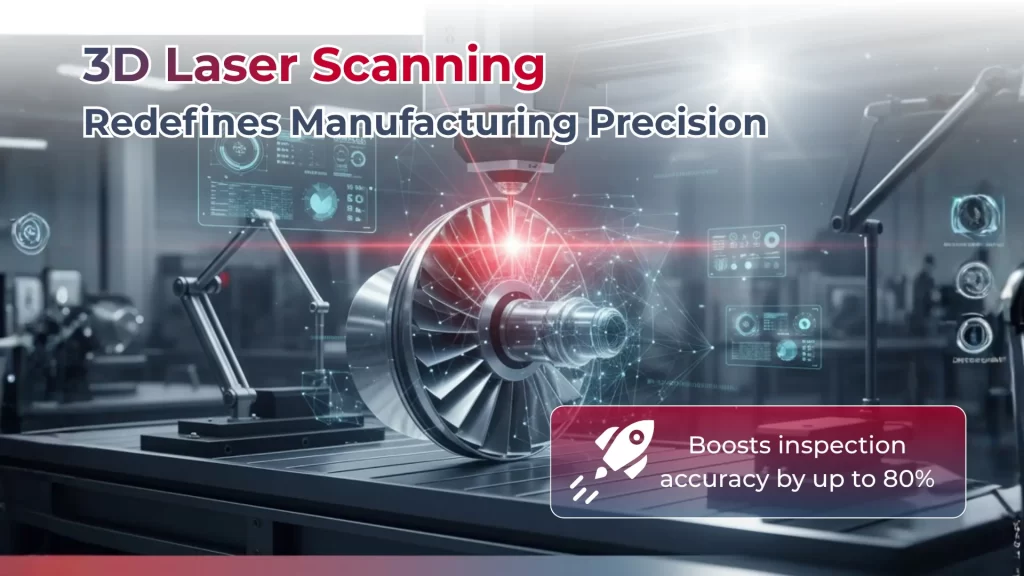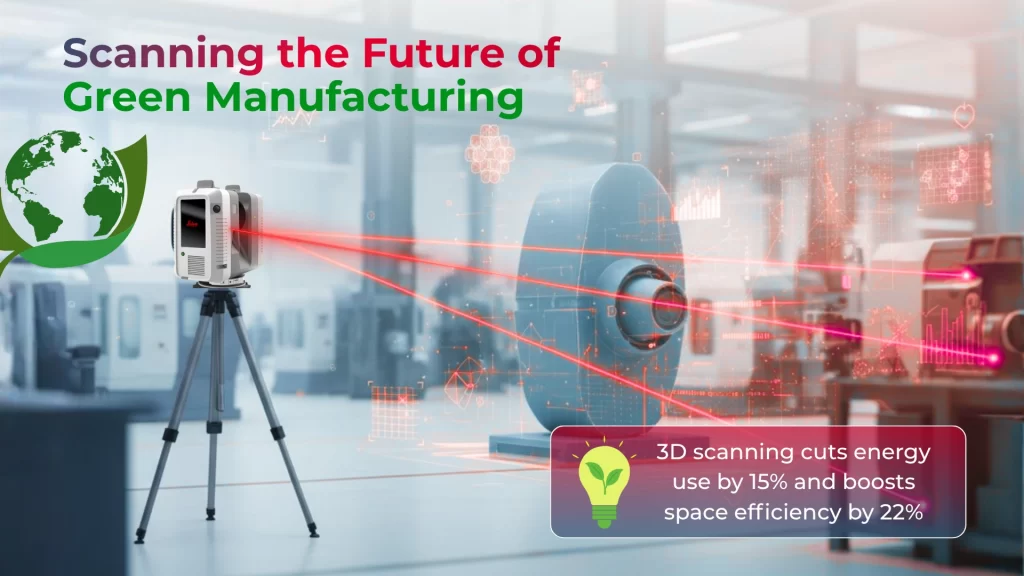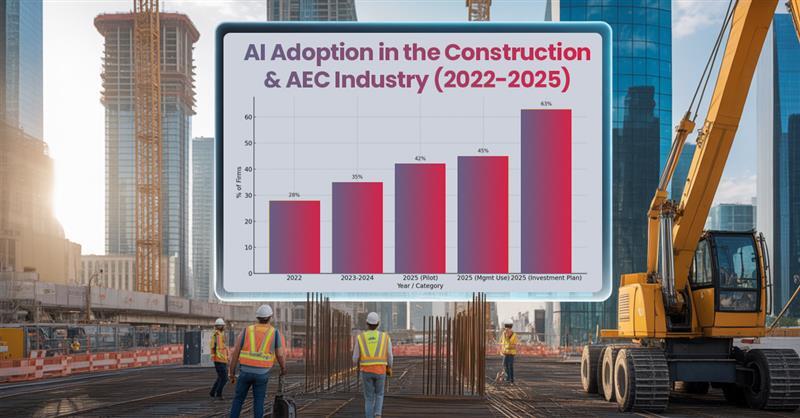
The future of construction is here, and it’s powered by artificial intelligence (AI). Construction sites are rapidly evolving into intelligent environments where every component creates and responds to data. Global spending on AI in construction grew from an estimated $1.40 billion in 2023 to $1.80 billion in 2024, signaling the industry’s shift towards digitally-enhanced infrastructure. This transformation is reshaping the landscape of construction technology and productivity.
Table of Contents
ToggleA speculative peek into the near-future AI-enabled jobsite
Tomorrow’s construction sites will feature AI-powered systems that continuously monitor progress and performance. Drones and roving robots equipped with cameras and LiDAR scanners move autonomously across the site each day. They capture high-definition images that AI software compares against Building Information Modeling (BIM) models to spot discrepancies. This virtual inspector identifies issues that typically take weeks to discover, significantly improving construction performance.
Construction managers access up-to-the-minute data through user-friendly interfaces. AI algorithms flag potential safety hazards before accidents happen. Computer vision systems analyze video feeds to detect workers who miss protective gear or enter restricted zones, sending instant alerts to supervisors. Project managers can make informed decisions based on predictive analytics instead of reacting to problems after they surface, enhancing overall construction productivity.
How sensors, AI, and digital twins create feedback-rich environments?
IoT sensors, AI, and digital twins form the backbone of this intelligent ecosystem in AI construction. Sensors installed on equipment, materials, and throughout the site transmit data about current conditions and construction status. Project managers can track progress remotely without being physically present, streamlining the construction performance monitoring process.
- Digital twins, dynamic virtual replicas of physical assets, act as the central nervous system for this data flow. These models update continuously using sensor inputs, creating a complete “digital profile” of the asset that evolves throughout its lifecycle.
- AI algorithms process this wealth of information to predict potential issues, recommend solutions, and guide decisions, revolutionizing the design development phase and beyond.
- Teams now work in a feedback-rich environment where data guides timely decisions. Advanced 3D visualization and VR interfaces help teams interact with digital structures naturally.
- AI boosts coordination by creating a common data environment for all stakeholders, enhancing the overall construction technology ecosystem.
Start building a sustainable future today. Get free BIM consultation for your project.
A Cultural Shift of AI for General Contractors
The construction industry has always prioritized state-of-the-art materials and methods, but still hesitates to embrace digital transformation. AI technologies offer clear benefits, yet construction firms have seen just a 1% productivity boost over the last two decades. This lag substantially behind other industries. The gap doesn’t stem from tech limitations but runs deeper into cultural factors, highlighting the need for a shift in the approach to AI and construction.
Why mindset is the true barrier (not tech) in construction AI adoption
Cultural resistance stands as the biggest roadblock to AI implementation in construction. The industry’s traditional mindset values perfection and proven methods—which makes sense when you’re building structures that need to last generations. The high-risk, expensive nature of construction work naturally makes companies cautious about new technologies.
This resistance manifests in several ways:
- Risk aversion and preference for familiar processes
- Organizational structures that hold back innovation
- Fear of the unknown, especially when it comes to job displacement
- The “perfection mindset” that clashes with AI’s step-by-step improvement approach
Indeed, it is the cultural adaptation, not tech expertise, that determines successful AI adoption in construction. As one industry expert puts it, “perfect is the enemy of good” in digital transformation. Companies that thrive with AI show an entrepreneurial spirit and are willing to experiment, and sometimes fail, to improve long-term construction productivity.
Rethinking decision-making hierarchies for General Contractors
AI creates a radical alteration in construction management from reactive problem-solving to predictive strategy. Traditional decision-making depends heavily on human judgment, which leaves room for subjective bias and inconsistency. AI algorithms analyze vast amounts of structured and unstructured data to spot patterns and create precise projections, transforming the future of construction.
General contractors must rethink their time-tested hierarchies.
- AI implementation makes site coordination, financial oversight, and risk mitigation more precise. This leads to fewer delays and improved safety records.
- Companies need to encourage cultures that value continuous learning and advanced digital solutions. They should create environments that welcome experimentation fostering a more adaptive construction workforce.
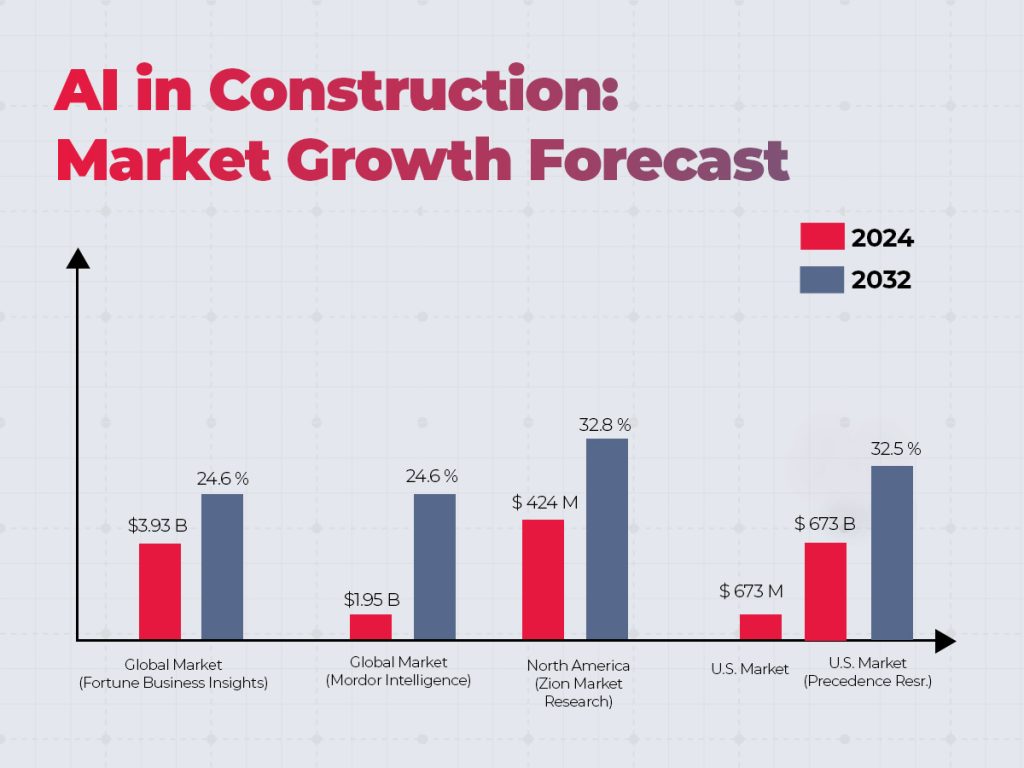
Learning from the Past: How AI Turns Construction Errors into Insight
Construction errors drain billions from the industry each year.
Studies show all but one of these megaprojects go over budget by more than 30%.
This ongoing problem points to more than just financial issues – it shows how AI could revolutionize the industry, particularly in the realms of building maintenance and construction productivity.
Learning from rework, change orders, and delays
AI systems are completely changing how construction teams handle errors by tackling their mechanisms.
Companies that use AI-powered image analysis have cut their rework costs by 18%.
- They do this by comparing daily progress with 3D models. The technology also spots differences between Building Information Modeling and actual construction captured through 3D laser scanning solutions, significantly improving accuracy.
- AI turns complex project data into useful insights.
The advantages extend beyond cost savings. AI-powered tools make inspections easier through:
- Advanced image recognition that spots construction defects in site photos
- Drones with AI that capture detailed site images in minutes
- Automated tools that verify construction and assess firestopping
Using predictive analytics to spot patterns from past projects
AI shows its real value in construction through pattern recognition. Machine learning algorithms can see connections among causes and accidents and evaluate how serious risks are. These systems excel at finding valuable evidence-based insights in large datasets that humans might miss, enhancing overall construction performance.
Evidence shows that predictive analytics helps construction companies plan project timelines better.
- They do this by looking at past project data, available resources, and weather patterns. Artificial neural networks (ANN) and deep neural networks work especially well for estimating costs and optimizing the bidding and negotiation process.
- AI utilizes many data sources that create an early warning system that spots specific conditions when performance starts drifting from the plan.
- Construction managers can step in early enough to stop work from piling up, significantly improving construction productivity.
The Rise of Cognitive AI in Construction Admin
Administrative tasks take up almost 30% of construction project management time. This creates a bottleneck that delays delivery and drives up costs. Cognitive AI now offers a solution to this ongoing challenge by bringing smart automation to paperwork-heavy construction management, revolutionizing the permitting and approvals process.
Natural Language AI in RFIs, Compliance and Documentation
- Natural Language Processing (NLP) has changed how construction teams handle their documentation. AI systems now extract, sort and summarize key details from construction documents, which cuts down administrative work substantially.
- These smart systems check documents against regulations and flag any inconsistencies, missing clauses, or possible violations before they become legal problems.
- AI now drafts RFIs based on project types and past data. The system fills in fields with relevant details and suggests who should receive them. AI algorithms can spot potential duplicate RFIs before submission and suggest clarifying questions based on similar past requests. This smart approach extends to contract analysis.
How AI is freeing up mental bandwidth for engineers and PMs
- AI frees construction professionals from administrative tasks that used to drain their mental energy. Engineers and project managers say AI tools that handle repetitive work like AP entry, insurance certificate reviews, and meeting minutes save them considerable time.
- This change lets professionals focus on what matters. Construction experts point out that AI doesn’t replace human judgment – it makes it better by handling routine tasks.
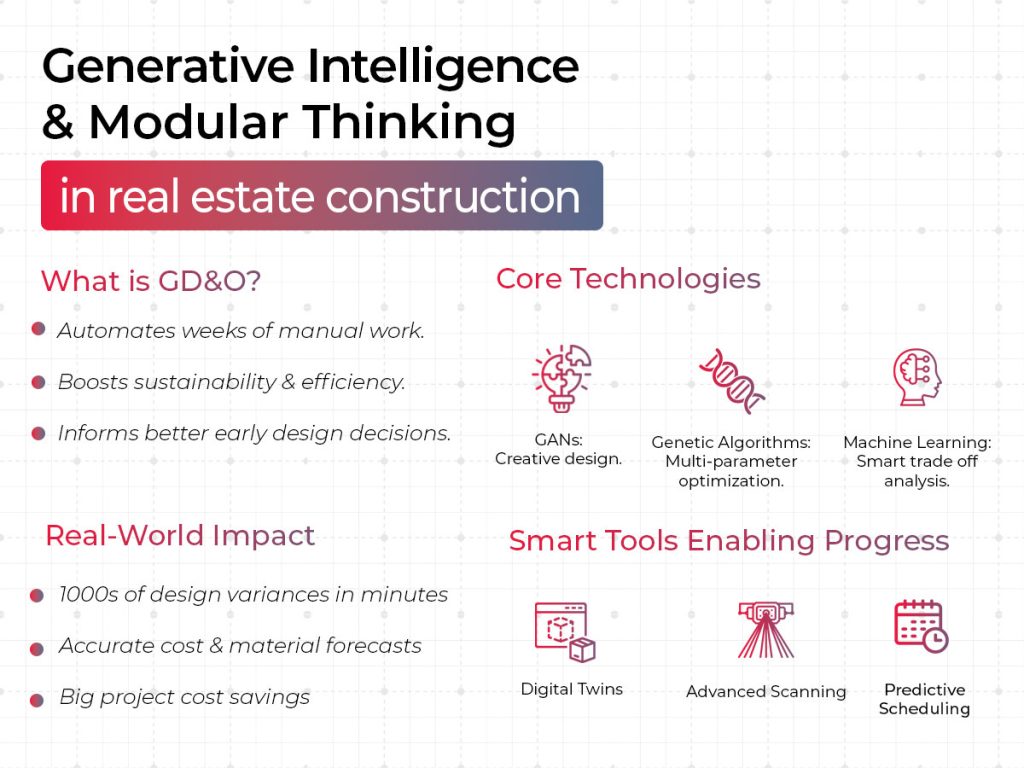
Human-machine collaboration in construction- Hard Hats won’t be replaced!
Human workers in construction have natural problem-solving abilities that AI cannot match. The future of construction depends on humans and machines working together, not replacing each other.
Why construction will always need human judgment on-site
- Construction needs creativity, problem-solving, and adaptability, qualities AI systems haven’t mastered yet. Human oversight remains crucial because:
- AI works best at prediction and action tasks but struggles with judgment.
A newer study, published in 2023 by researchers shows that while AI can automate half of human tasks, it can fully automate only 5% of jobs.
- Humans make ethical decisions that help AI-driven systems match society’s values. When data quality suffers or judgment criteria become unclear, human expertise proves invaluable for strategy, command, and leadership in the construction industry.
If We Don’t Lead, Tech Will Lead Us: Ethical + Strategic Considerations
Technology in construction moves faster each day, and we need to match this pace with ethical and strategic thinking. The relationship between construction firms and tech providers will determine who leads the industry’s future, builders or tool creators.
Avoiding black-box decision-making and unexplainable outputs
Black-box AI systems create major risks in construction. These systems make decisions without showing their reasoning, which can reduce accountability and stakeholder trust.
Several strategies help maintain transparency:
- AI vendors must document their algorithms’ decision-making processes
- Regular audits should compare AI outputs with human judgment
- Clear thresholds should exist for human oversight intervention
Ownership of data and algorithmic bias in construction datasets
Data sovereignty is vital as AI systems need big amounts of construction data. You need to control who accesses and uses your project information. Algorithmic bias poses real risks when AI systems learn from datasets that show historical inequities or incomplete information.
Construction companies should start with clear data governance frameworks. They need to look for potential bias in training datasets, particularly in safety protocols, cost estimations, and labor forecasting. Regular AI output audits help catch subtle biases that might slip through unnoticed, ensuring fair and ethical use of AI in construction.
Conclusion:
AI has revolutionized the construction industry by 2025. It has created smart jobsites where every component produces useful data. This goes beyond just upgrading technology. It represents a complete reimagining of construction projects from start to finish, shaping the future of construction.
The future belongs to humans working alongside machines rather than being replaced by them. AI takes care of repetitive, data-heavy tasks. Humans provide creative solutions, moral judgment, and strategic guidance. This teamwork creates new jobs like AI curators, robotics operators, and data analysts. These roles blend construction expertise with tech skills, reshaping the construction workforce.
The construction industry faces a crucial moment where technology boosts human abilities. Companies that carefully add AI while training their workforce will succeed. They’ll finish projects faster, safer, and more efficiently than before. Those stuck with old methods risk falling behind as the industry moves toward a smart, data-informed future built on the combined strengths of humans and machines, truly embodying the potential of AI and construction working in harmony.
Further Reading
How As-Built Drawings Ensure Compliance with Building Codes
BIM for Sustainability and Energy Efficiency Modeling
Building Information Modeling for Infrastructure : Comprehensive Guide
Comparison of BIM Modeling in Various Typologies
Competitive Advantages Of BIM Automation In The AEC Industry
BIM for Heritage Preservation – Future of Protecting Our Past
Future-Proofing AEC Projects: The Role of BIM in Meeting Both ADA and OSHA Standards
Our Services
Latest Post
Get A Free Quote
BIM Construction is the Future
Building information modeling (BIM) is the future of building design and construction. Get in touch with our BIM Experts.

